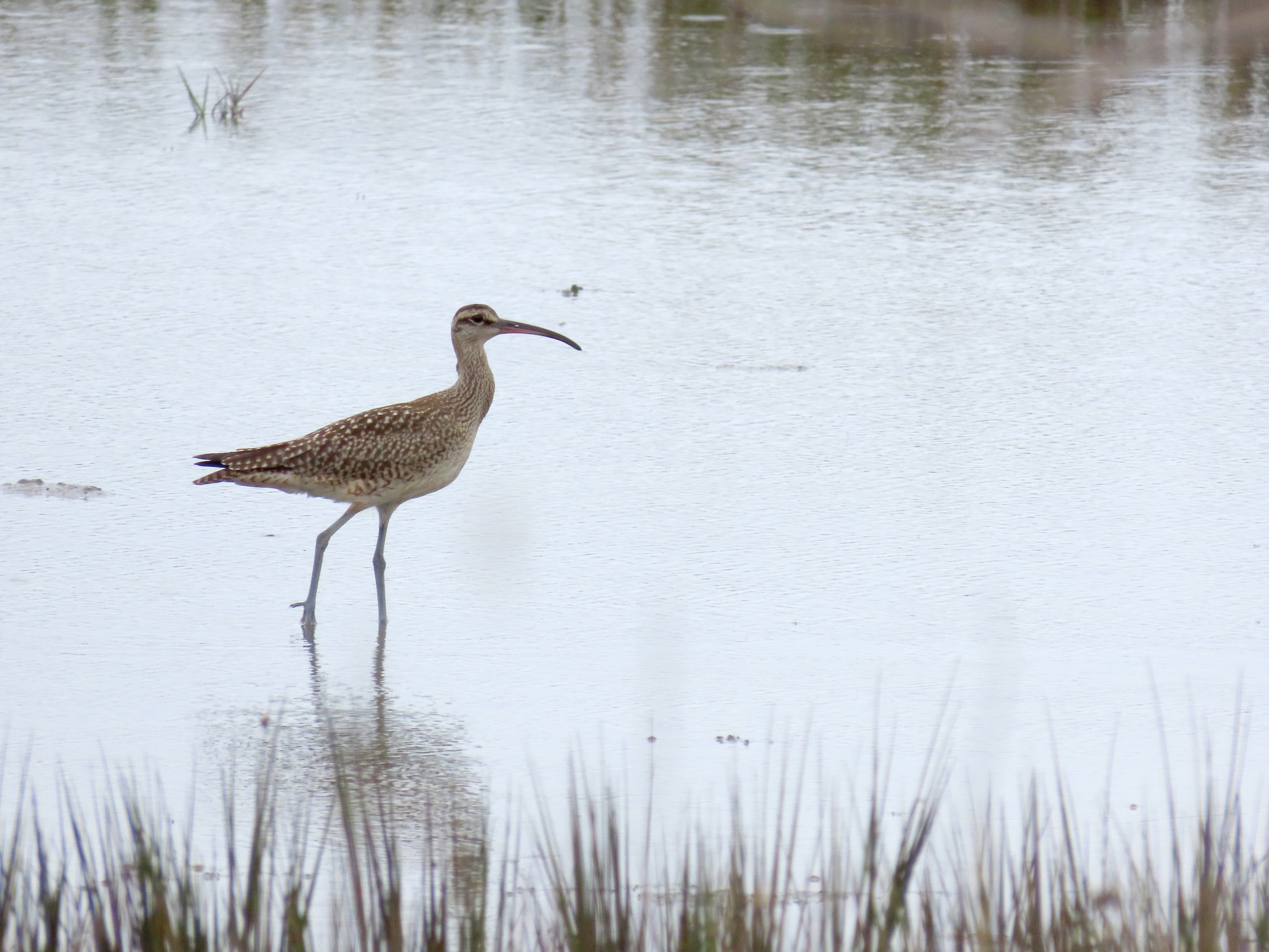
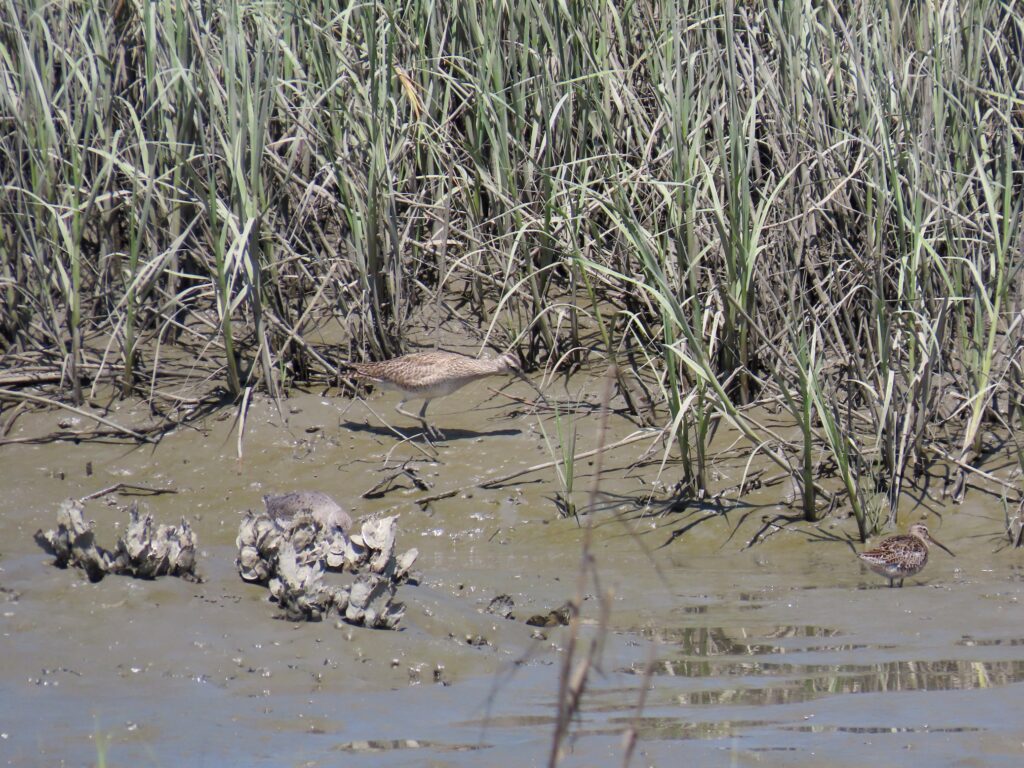
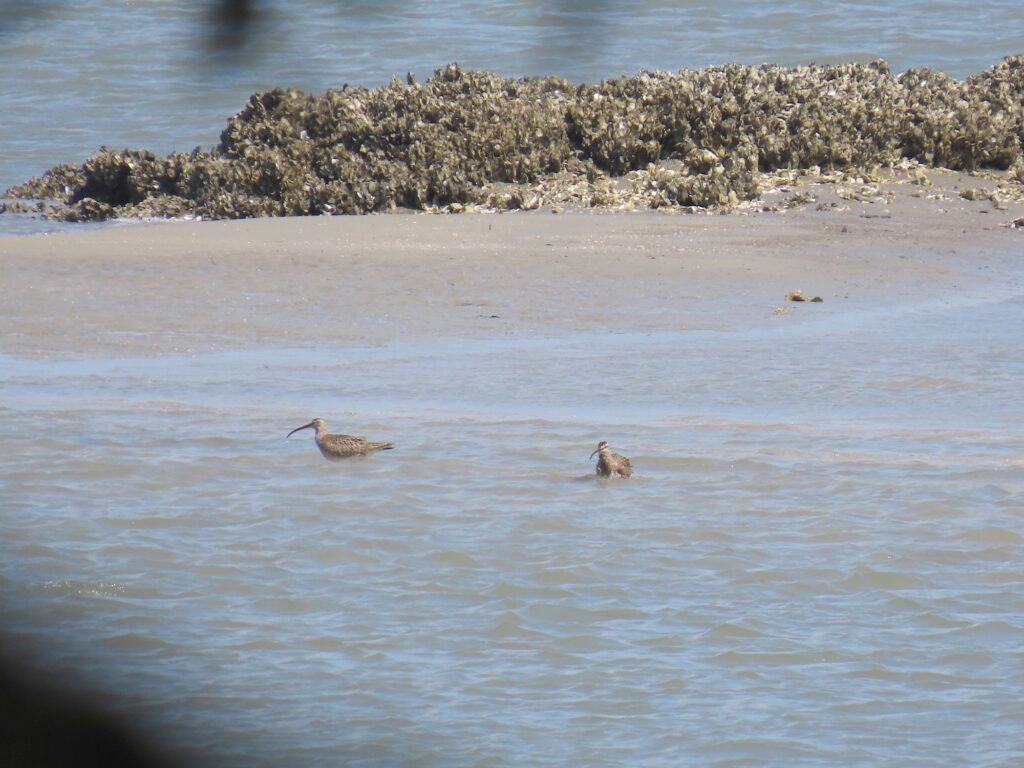
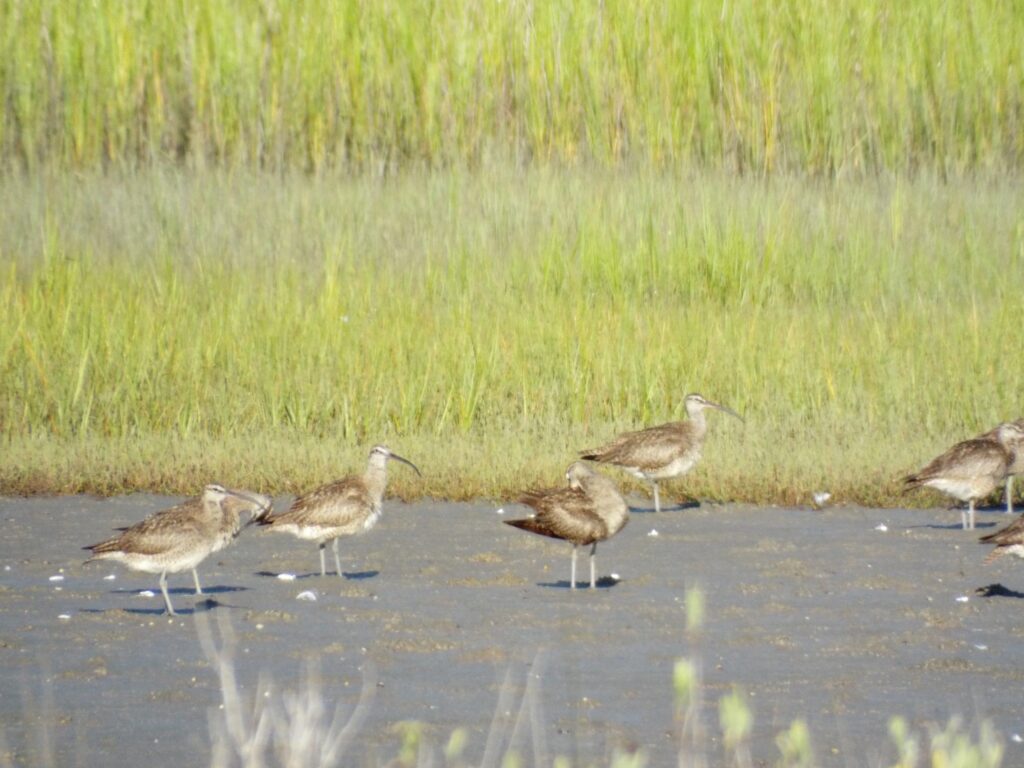
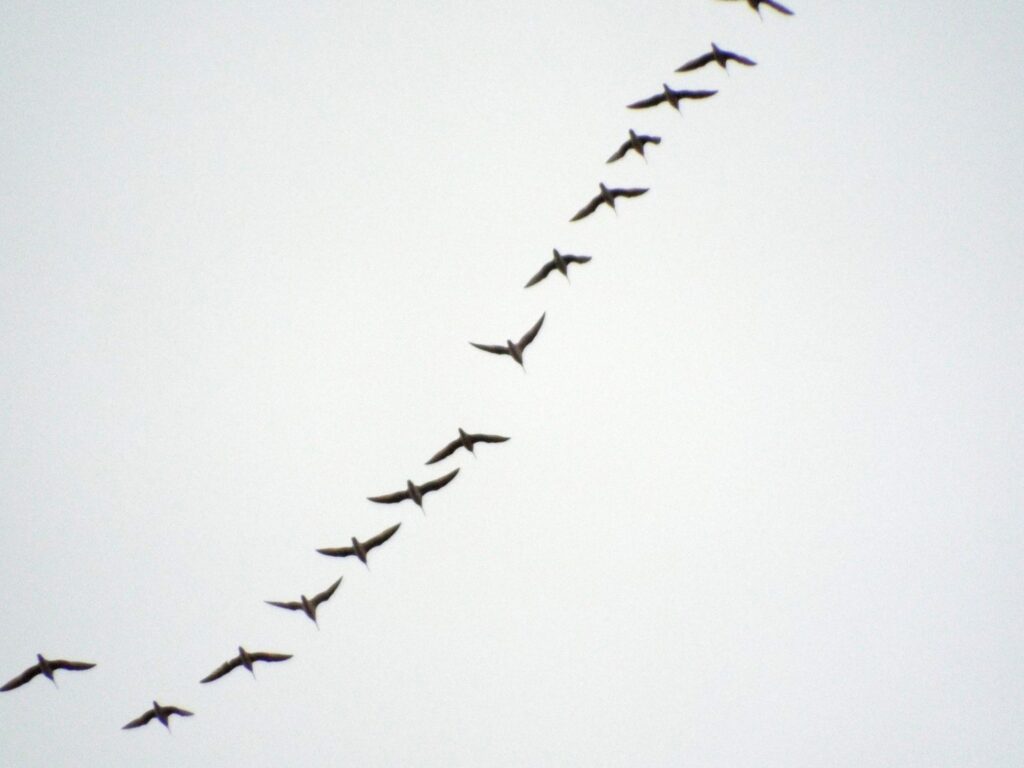
This week for Flora and Fauna Friday it’s our darling bird on Deveaux Bank, the Whimbrel (Numenius phaeopus).
Whimbrels are a cosmopolitan species, meaning they can be found all across the globe. Yet, they have four subspecies, three that breed in Europe and Russia and then our Hudsonian Whimbrel (N. phaeopus hudsonicus) who breeds in North America. Within the Hudsonian Whimbrel, there are two disjunct populations, one on the west coast of the Pacific Ocean and one on the east coast of the Atlantic Ocean. Here on Edisto Island, we see the Atlantic population of the Hudsonian Whimbrel.
The Whimbrel is a large shorebird, at about a foot high on stout black legs. Their plumage is a camouflaged pattern of mocha-brown and bone-white, each color breaking up the other in dots and dashes into a seamless cryptic checkerboard across their whole body. Their most standout feature is their long black bill that curves down towards the tip and, at the opposite end, blends back onto the head into a set of dark racing-stripes across their dome and a heavy line through their eye. Apart from their larger and scarcer cousin the Long-billed Curlew (N. americanus), there’s nothing else in South Carolina like a Whimbrel! Whimbrels spend their days in our saltmarshes and tidal creeks resting and foraging. Their diet consists largely of fiddler crabs, which they snatch from the surface of the marsh or pluck from deep within their intertidal burrows. Apart from fiddlers, they also eat a good deal of other crustaceans as well as some small mollusks and fish when available. When tides are high, Whimbrels retreat to oyster banks, hammock islands, and sometimes even docks, to rest and digest until the tide ebbs. Whimbrels use their time here on Edisto Island to put on the pounds they need to fly up to the Arctic Circle to nest in the Canadian tundra. Some Whimbrels overwinter here in the marshes of the Edisto Rivers and the ACE Basin. Some younger birds may even spend their first summer on the South Carolina coast, forgoing migration. However, the prime time to find a Whimbrel on Edisto Island is during their spring migration.
Edisto Island is of the utmost importance to the survival of the Atlantic Hudsonian Whimbrel population. During spring migration, nearly fifty-percent of our total Atlantic population will simultaneously use Deveaux Bank as an overnight roost, flying in by the thousands as the sun sets. Deveaux is an undeveloped sand bank at the mouth of the North Edisto River, in between Seabrook and Edisto Islands, which is owned and managed by SCDNR. In 2019 the importance of Deveaux Bank was made known globally to ornithologists and shorebird conservationists through research by SCNDR biologists. From the research, scientists had learned where the Whimbrels were roosting, at an astonishingly high concentration, but not where they were all dispersing to forage during the day. In 2024, new research to answer those questions is ongoing and its preliminary results have revealed the importance of Edisto Island and the ACE Basin to the survival of the Atlantic population of the Hudsonian Whimbrel. Our migrating Whimbrels all roost on Deveaux at night but, in the day, they disperse across the tidal marshes of Edisto Island, Toogoodoo Creek, Bohicket Creek, St. Helena Sound, the Kiawah River, and even all the way over to Beaufort to feed. They are dependent on the entirety of the tidal ACE Basin and its surrounding sea islands’ marshes to survive, with Edisto Island housing the closest all-you-can-eat fiddler crab buffet to Deveaux Bank. Whimbrels use their time here on Edisto Island to put on the pounds they need to fly up to the Canadian tundra in the Arctic Circle to nest.
Without SCDNR’s management of bird sanctuaries like Deveaux Bank and the prior decades’ worth of tireless land protection work by the Edisto Island Open Land Trust and our peers in the ACE Basin Task Force, we could have already lost the Whimbrel on the East Coast by this point. Whimbrels are in steep decline and Deveaux Bank and the ACE Basin represent what may become their last stronghold on the East Coast. With each passing year, South Carolina’s preeminence, cooperation, and forward thinking actions in the arena of landscape-scale conservation are being realized, recognized, and solidified as the standard by which all other regions of the country must compare, the ACE Basin being a crown jewel of those efforts. EIOLT is a proud member of this cooperative conservation community and thanks you, dear reader, for your support that makes it possible for EIOLT to continue our efforts to protect land containing critical habitat for imperiled coastal species, like the Whimbrel, who depend on Edisto Island to survive.